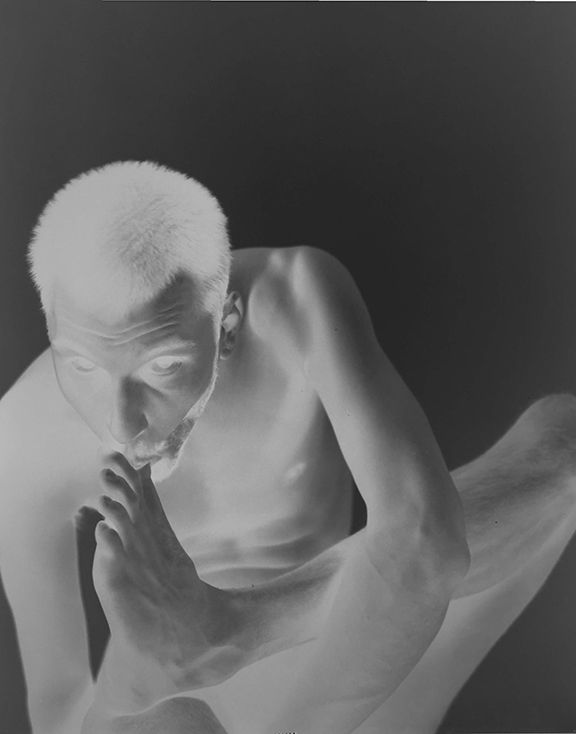






























Gestures in a Time of an Epidemic
Having acquired expired film from 1985, which happens to be the year of my birth, I started to think about the death of the film as well as what events during that year that impacted the LGBT community. 1985 really became the realization that HIV/AIDS was an epidemic. “By the end of 1985, every region in the world had reported at least one case of AIDS, with 20,303 cases in total.”[1]
Although I did not experience the height of the disease as an adult, it still feels as though an ominous shadow of it lurks over the LGBT community today. HIV is still not fully discussed openly and remains incredibly stigmatized. By appropriating gestures from photographs of openly gay artists and activists that passed away from AIDS, the goal of my piece was to revisit the epidemic through loss and to restart a conversation that is often lost on my generation of LGBT individuals.
By taking these photographs, I confront my own self-identification of being a gay man while thinking about the artists that were photographing, sculpting and working around ideas of sexuality, gender and the AIDS crisis at that time: Robert Mapplethorpe, Peter Hujar, David Wojnarowicz, Paul Thek, Leigh Bowerey and Felix Gonzalez Torres, just to name a few. Rather than a one-to-one recreation of these images, it is the gesture or pose within each photograph that I am most drawn to. The poses vary from subtle to overtly expressive. The gestures that I have selected represent the end of these men’s lives while also define my own contemporary reality. Each image is a snapshot of my life and feelings of being free to be myself that these artists paved the way for.
The final installation of this project is a wooden gridded light box upon which thirty imperfect negatives are individually displayed. Dirt, grime, fogging and other defects are present amongst all of them, adding desired elements of destruction and decay. The negatives are a metaphor for the reflected artist's own underdevelopment, for each of their creative lives cut short by deterioration. From afar, the thirty negatives work together to form this larger, singular narrative. Individually, however, they are also just as important. Every negative can and should be scrutinized close up as a separate and individual piece of work. Both the particular imperfections of the expired film and selected gesture(s) in each portrait were meant to convey important and unique messages about the individual and story of his that they reflect.